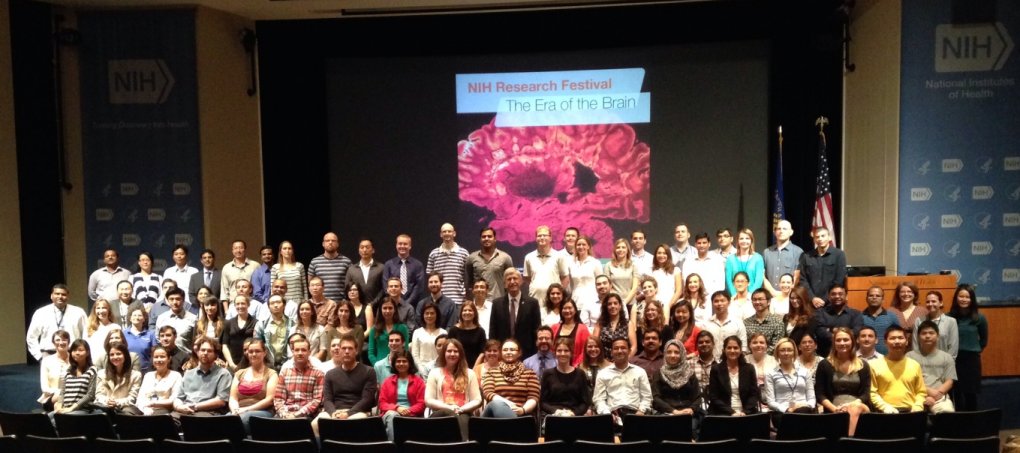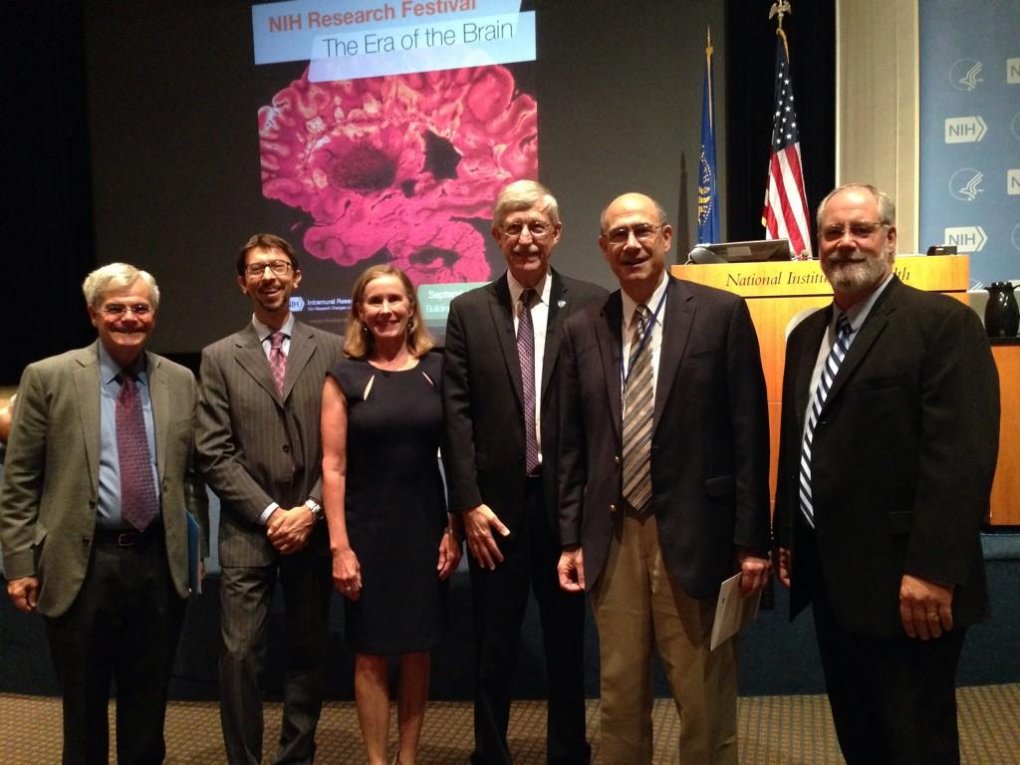Top Scientific Brains Discuss Brain Science at NIH #ResearchFest Plenary
The NIH Research Festival this year was themed “The Era of the Brain,” so Dr. Francis Collins, NIH Director, began the plenary session by highlighting the BRAIN Initiative (Brain Research through Advancing Innovative Neurotechnologies). The President’s initiative has been the talk of the town recently and, thanks to some hard work by the leaders at the NIH, has now been transformed into a 12-year scientific vision. The first year’s BRAIN research awards in fiscal year 2014 totaled $46 million. As of the time of the plenary session, the awardees had not been announced, but now you can check them out here: http://www.braininitiative.nih.gov/nih-brain-awards.htm.
Dr. Collins also highlighted some of the other initiatives (all with catchy acronyms, because it wouldn’t be the Federal Government without acronyms) that deal with the problem of antimicrobial resistance, the expansion of big data, and increasing diversity in the scientific workforce. As a postdoc in the intramural program at NIH, I don’t hear about these things on a daily basis, so it’s interesting to learn about the things that NIH is doing that tie in with major news events and headlines.
After the welcome and introduction, there was a presentation featuring the Fellows Award for Research Excellence (FARE) recipients. FARE is the only trans-NIH award specifically for trainees at NIH, and there were 923 abstracts submitted this year. About 4,000 postdocs and clinical fellows do research at NIH, and that number doesn’t even include other trainees, like graduate students. These awards are run and judged by postdocs and clinical fellows, and winners receive $1,000 so they can travel to a conference to present their work.

The 2015 FARE winners.
The FARE committee for 2016 is looking for people now to judge next year’s awards, so if you’re interested in being on the committee, email FARE@mail.nih.gov. And of course, if you are a trainee at NIH, you should apply for next year’s award! As Dr. Michael Gottesman, Deputy Director for Intramural Research, said, he “can’t guarantee that it will get you a job, but it couldn’t hurt” to have it on your CV.
To finish out the plenary session, two of NIH’s own presented their neuroscience-related research on addiction and movement. Dr. Antonello Bonci, Scientific Director at NIDA, presented his work on substance abuse and the brain. There are receptors in the brain that produce what is known as long term potentiation when exposed to drugs such as cocaine. This long term potentiation produces an increase in the connections between neurons, and it affects both learning and memory. He has also used techniques such as optogenetics to look at what happens in the brain when cocaine is used for a long time. Optogenetics involves introducing genes for proteins that can be activated by shining light on them. Using optogenetics, Bonci’s lab was able to study what parts of the brain were activated in mice and rats that were given cocaine as a “reward” to better understand what happens in the brain during cocaine use.
Then, Dr. Mark Hallett, Senior Investigator at NINDS, presented his research on movement and the brain, specifically on dystonia, which is a movement disorder with adult onset where abnormal muscle movements occur. One of the most common forms of this disorder is musician’s cramp—a patient would be able to move his or her hand normally for any regular daily tasks, but when he or she plays a musical instrument they would have muscle spasms or cramping in the hand. Dr. Hallet said the best therapy for this disorder is actually botulinum toxin (Botox), and one musician’s cramp patient of NIH, Leon Fleischer, was able to give a piano concert after being treated.

Bold brains (left to right): Drs. Michael Gottesman, Antonello Bonci, M. Catherine Bushnell, Francis Collins, Mark Hallet, and Michael Krause
Dr. Gottesman then completed the plenary session by mentioning that half of the Institutes and 25% of the PIs at the NIH conduct neuroscience-related research, helping to illustrate just how important the brain is to human health.
Related Blog Posts
This page was last updated on Monday, February 26, 2024
